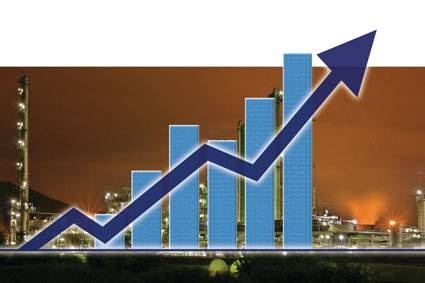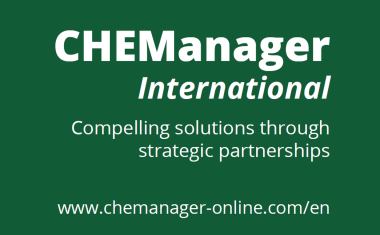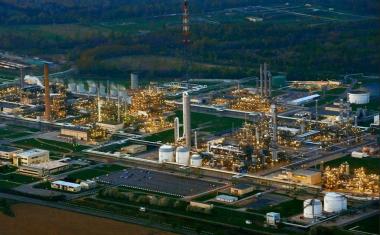Deloitte’s Global Chemical Midyear Outlook

Shaping The Industry - The global chemicals sector was once again on solid ground as the first half of 2011 wrapped up. Revenue has been stronger due to higher prices, a result of chemical companies passing on the higher cost of raw materials, as well as increased growth rates in developing markets.
Volume growth, particularly in the developed markets including the U.S. and Western Europe, has been more subdued. Overall, it is anticipated that the sector will continue to gain momentum with a compound annual growth rate (CAGR) of 7.9 % over the near- term.
Deloitte Touche Tohmatsu Limited (DTTL)'s Global Manufacturing Industry group convened an international panel of sector leaders from Deloitte member firms around the world to delve into the most pressing issues facing the chemical industry. This outlook captures perspectives from the panel discussions and focuses on a midyear view of the chemicals sector and key trends shaping the industry.
Regionally, the story is a familiar one. Led by China, demand for chemical products in the Asia-Pacific region is expected to grow at a CAGR of 12.1% over the near term. As a result of the market momentum over the past few years, China is expected to overtake the U.S. as the world's largest chemical market by the end of the year.
This new market position for China is driven by increased demand from both domestic and international end markets, and the shift to produce more value-added products for higher profits.
While demand in the U.S. and Europe is expected to be modest in 2011, higher prices will likely translate into stronger revenues for chemical companies. The U.S. chemical market is projected to grow a CAGR of 3.5% for the near term, while its European counterpart will see a CAGR of 3.3% over the same period.
What End Markets Will Drive Growth in 2011?
In general, the more manufacturing-intensive end markets are expected to rebound from flat to moderate growth, however, not to pre-recessionary levels. One of the most significant end markets for the global chemicals sector is the automotive industry. Sales for the global automotive industry are expected to reach over 60 million units in 2011, a 5% increase from 2010 levels. These levels are a direct impact from a growing global economy.
In China, automotive sales in 2011 are expected to increase 10% from the previous year. In North America, there are signs of optimism for the automotive industry with 15 million vehicles expected to sell in 2011. In Europe, a 5% increase in sales is projected for 2011.
The European automotive industry represents more than 20% of the chemicals sector's end customers, but GDP may have to improve further before the industry returns to pre-2007 levels. The sector is expected to benefit from the rising use of electric vehicles (EVs) and the development of more advanced batteries to power them. Battery innovation will continue to be revenue opportunity for the chemicals sector.
The continuation of the strong growth of the automotive sector in key markets including China should also drive chemical industry growth in 2012 and beyond.
Aviation, also a significant industry for the chemicals sector, is expected to be sluggish. Much of the growth for aviation will likely come out of Asia due to the increase in travel with the growing population. Both China and Japan have major initiatives planned and that should stimulate growth in those geographies. The 20-year global forecast for commercial-aircraft production is upwards of 30,000 units. Of those, over 14%, or over 4,000 new commercial aircraft, are expected to be placed into service in the Chinese airline industry.
There are mixed signs ahead for construction and related industries. While the overall outlook looks positive, the growth in these industries may be deferred into 2012 and beyond. Continued unemployment challenges in the U.S. have slowed the recovery of the housing market and the commercial market seems equally soft. In the U.S., completed housing units in March 2011 were approximately 500,000, which is about 20% less than rates in March 2010.16 In Europe, the euro has not weakened as speculated, enabling the housing and construction industry to remain strong in most markets.
China's housing sector, on the other hand, is faced with high-vacancy rates, which may hamper growth over the next year. Over the longer term, the construction industry is expected to have a strong recovery as the global economic situation improves.
The increasing need for efficiency in materials also plays a strong role in the construction sector's recovery and adds to the potential opportunities for the chemicals sector.
How Are Chemical Companies Responding To Global Megatrends?
Not all companies are well positioned to respond in the same way to global megatrends that will likely create disruption and at the same time, opportunity for chemical companies over the next decade. Some future megatrends, including sustainable housing and agriculture, are among the areas that are prominently in play by chemical companies this year in an effort to gain a competitive advantage.
Other activities, such as making materials lightweight or more efficient, reflect a narrower focus on subsets of larger trends but still of importance for companies in 2011. Most companies, however, are looking to take advantage of megatrends in the near future as they become more important to the industry. Some companies are directing their entire portfolios toward the megatrends for future opportunities.
Chemical companies that are proactively looking to capitalize on megatrends now are focusing their long-term business strategies on solutions critical to society. They are increasing their efforts in innovation and their focus on efficiency in commercialization, plugging into global innovation networks, and emphasizing key technology areas in energy, health care, and climate change.
While forward-thinking companies are meeting the challenges presented by the megatrends, others are slower to react. This is especially evident in the search for alternative energy solutions and the reduction of greenhouse gas emissions.
These trends are currently being leveraged by some companies, but many are not taking full advantage of the available opportunities, which may create more of a competitive disadvantage for them leading into 2012. Another reason why some companies have been slower to embrace megatrends is that some, including alternative energy solutions, require government subsidies to make them economical.
The concern is that these products will not gain full financial potential without perpetual government support. As chemical companies recover from the global economic downturn, stable and financially strong companies will have more financial resources to grow and transform themselves to take best advantage of the megatrends.
How is the industry addressing supply-chain challenges?
One of the existing supply chain challenges in 2011 for chemical companies in the developed economies is the rationalization of facilities that are not strategically positioned to meet future global demand. This misalignment is an issue that needs to be addressed to balance supply and demand. Many companies are making investments through ventures and other business opportunities in China and India, and that trend is likely to continue through the end of the year and beyond. Increasingly, it is important to site production near raw material sources to maximize the overall value.
The volatility of raw material prices continues to challenge chemical companies today due to the large share of overall costs these materials represent. Companies use various tactics to mitigate the risk including long-term purchasing contracts and better procurement strategies such as more real-time procurement and real-time payment. Additionally, companies are seeking to link raw material procurement and product pricing strategies to mitigate the effects of cost volatility on profit margins.
An issue that continues to add pressure for many chemical companies is Reach. Regulations like this from the European Union have changed the rules that govern imported products and many companies are not prepared today to mitigate the risks.
Where Do You See Industry Consolidation Going In 2011?
In 2010, the pace of M&A activity in the chemical industry picked up. The year also saw a return of private equity to the M&A arena. The global chemical industry is poised in the second half of 2011 to resume a more natural cycle of value- based buying and selling.
The total chemical industry M&A deal volume of approximately $73.7 billion in 2010 came just short of the 2008 level of $81.3 billion. Private-equity players in the chemical industry made an enthusiastic re-entry into the M&A arena with $4.9 billion in deals - a level not seen since 2006. It is estimated for 2011 that the market for all global deals will crest at over 3,000 transactions for the first time since 2008, when there were 3,574 deals.
It is expected an increase in both deal volumes and deal value in 2011 will resume as economic activity increases. Total deal value in the first quarter of 2011 approached pre-crisis levels. Similar figures are anticipated for the end of 2011. Many companies have spent time focusing on efficiencies and disposing of non-core business units that have substantial stores of cash on their balance sheets.
Combined with the limited capacity for organic growth, this will drive M&A activity, particularly in the developing countries in the near term. While chemicals and plastics have consistently been among the most global of industries, the current global dynamic (the strong recovery of demand in the developing markets and the lagging demand recovery in the developed countries) could have the effect of turbo charging the rate of M&A deals concluding 2011.
With organic growth limited, especially in the developed markets, companies now appear to consider structural change a more common and necessary lever to improving their fortunes. As growth in developed countries tapers to a new and lower norm, and as significant capacity is built in regions close to areas of expected growth and/or economical feedstocks, legacy assets will be viewed in a brighter, harsher light. Asset sales and rationalizations are expected to continue for the next several years, until global and regional supply and demand are more balanced.
Conclusion
As the second half of 2011 begins, the global chemicals sector is expected to see a continuation in revenue growth, yet with more modest levels of volume growth. Leading into 2012, China is anticipated to dominate the global chemical scene with the highest revenue increases on a percent basis, with markets such as India, Brazil, and Korea not far behind. Although China's chemical industry still has some challenges to overcome, including low levels of industry concentration, limited capacity for innovation, and energy inefficiency, the Chinese government's Twelfth Five-Year Plan will play a vital role in advancing the country's chemical industry.
The automotive and construction end markets are experiencing an upswing in demand in 2011, as a result of a stabilizing global economy and the impetus for more efficiency in materials. Although megatrends tend to be long-term business opportunities, many chemical companies are capitalizing on these trends today and focused on trends such as sustainable housing and agriculture to gain competitive advantage.
Many European companies are still grappling with the regulatory demands from REACH, but also looking at the megatrends for growth opportunities. These companies are currently working to meet the requirements, yet trying to limit the pressures added to the global supply chain. On a global basis M&A activity is a bright spot for the global chemicals sector with 2011 deal volumes and values likely to exceed pre-recession figures. Overall, the global chemical sector is well positioned for the remainder of 2011 to not only meet revenue forecasts, but also to create opportunities to meet future projections for growth in 2012 and beyond.
The global retail sales of the consumer electronics are projected to grow by 10% in 2011 to reach $964 billion. It continues to be a solid area for growth and was somewhat shielded from the precipitous drop-offs that some other sectors experienced.
With respect to heath care products, the pharmaceutical sector projects an average 8% annual boost in sales over the next few years. Nutrition and food are key growth markets for several reasons, including burgeoning demand for convenience foods and functional foods (nutraceuticals), and increased consumer interest in over- the-counter products.
The market growth in India is also gaining ground as the middle class expands and demand for chemical products grows. New oil and gas discoveries in Brazil have spurred growth in the local chemical industry, and investments in the sector are expected to reach $26 billion over the next few years. These regional opportunities will likely impact the overall dynamics of the global chemicals sector, creating new players and products that will add to the growth in the closing of 2011.
















